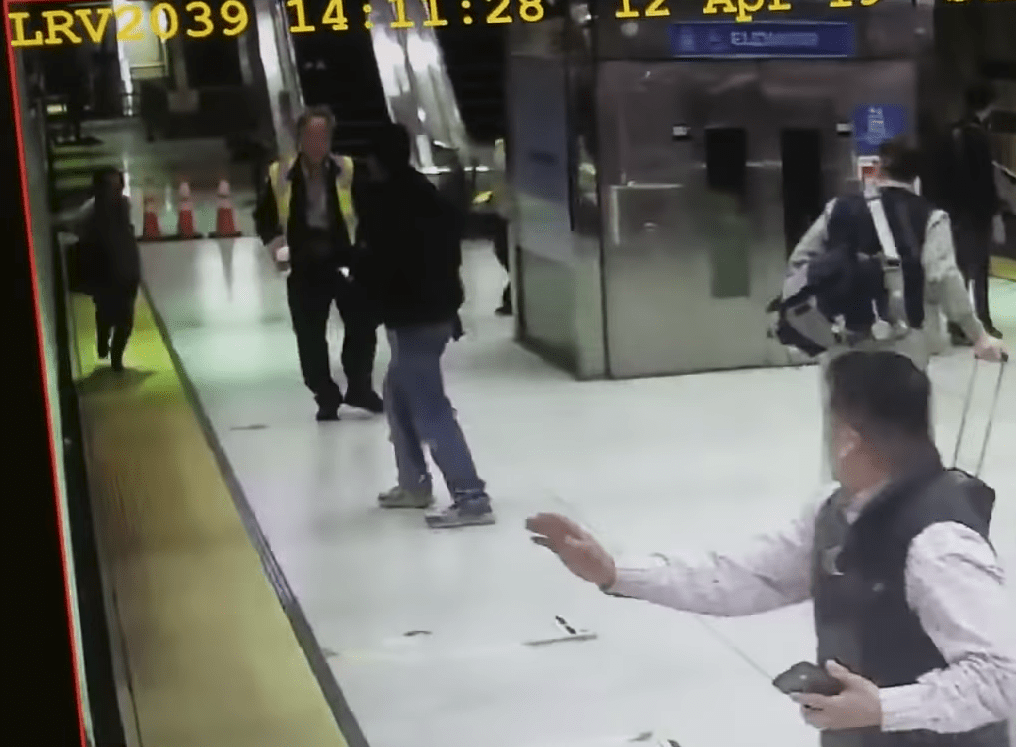Note: GJEL Accident Attorneys regularly sponsors coverage on Streetsblog San Francisco and Streetsblog California. Unless noted in the story, GJEL Accident Attorneys is not consulted for the content or editorial direction of the sponsored content.
Earlier this month, a woman whose finger was caught in the door of a new Muni train was dragged and badly injured at the Embarcadero Station. Recriminations are focusing on the doors, which apparently don't always properly reset when a small object obstructs them from fully closing.
The city has responded by delaying funds for additional car purchases. According to a statement from SFMTA, they will be locking the rear doors on the new Muni trains so that "...operators can focus on seeing passengers entering and exiting the single doors nearest to them which adds a level of safety vigilance." The agency also wrote that they "...want to remind customers to avoid holding the doors open in any way."
But focusing solely on the doors, according to a safety expert and others familiar with transit operations, misses a larger issue.
"Operators are responsible for looking back and seeing that nobody is caught in the door," said Dennis Lytton, a Bay Area-based expert on train safety and operations, and a former Program Manager of Safety and Security at the American Public Transportation Association. Lytton has also driven multiple rail vehicles in public operation, including light-rail vehicles (LRV) that are similar to Muni trains. "Muni has a broken safety and operational culture if it allows a train operator to drag a woman who has her hand stuck in the door."
The San Francisco Transit Rider's Rachel Hyden, in an email to Streetsblog, voiced similar concerns. "Why didn’t the operator stop or re-open the doors--aren’t they supposed to make sure all is clear before moving?"
Lytton explained that train systems around the world have varying sensitivity at door edges and that many will stop the train even if there's a small pebble stuck between the doors. Lytton said "...the door will pop open, and that would require the operator to get out-and inspect and troubleshoot the door," but he added that it's still possible for a door to malfunction or something thin to get stuck, and the operator's "main job is to look back and make sure the side of the train isn't dragging anything."
He said it's hard to comprehend how the Muni operator of the train missed seeing the woman, especially considering there was also a Muni employee in a bright yellow vest standing next to her and that it was on a straight section of tracks on a relatively short vehicle, compared to a BART train, for example. "You can imagine [an operator could miss] a person who is stuck and flush to the side, or it's such a long train consist that it's hard to see," he said.
In the video, the train leaves the station and appears to accelerate down the line and continues into the tunnel normally.
Unlike its older trains, Muni's new vehicles don't have mirrors for look backs. Instead, the operator depends on video screens that are located in the cab, explained Roger Marenco, president of the Transportation Workers Union Local 250-A. He told Streetsblog that the operator doesn't see the same camera view the public has seen (and from which the still in the lead image was captured). Although he said he has not seen the recording of the operator's screen from this incident, he said operators have complained generally of blind spots with the new trains. Another source at Muni said the blind spots are especially acute at the far end of the trains.
Constance Gordon, public information officer for the Public Utilities Commission, which is responsible for regulating safety on Muni, said they are investigating the accident. She said they can't comment on an ongoing investigation, but that she was also surprised the operator didn't stop the train. "I would think that would be one of the things they’re going to look at," she added.
In response to questions about what the operator could see through the train's cameras, Erica Kato, a spokesperson for SFMTA, told Streetsblog via email that "our team is still investigating the details of specific incidents." The agency's official statement on the incident says they are "Reminding Muni light rail operators to follow their training and actively monitor the area around the train before departing stations."
According to a post on Muni's web page, "The new cars have more reliable passenger doors, better visibility from the operator cab [emphasis added] and an enhanced braking system." SFMTA's acting director Julie Kirschbaum, meanwhile, told NBC Bay Area Thursday that she also had "deep concern" about the operator not stopping the train.
"Riders deserve to understand what went wrong and what’s being done to prevent it from ever happening again," said Hyden. "We need Muni to take responsibility and be clear about any changes needed in management, oversight, training, maintenance, procedures, or testing."






